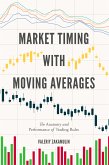This book focuses on modelling financial information flows and information-based asset pricing framework. After introducing the fundamental properties of the framework, it presents a short information-theoretic perspective with a view to quantifying the information content of financial signals, and links the present framework with the literature on asymmetric information and market microstructure by means of a dynamic, bipartite, heterogeneous agent network. Numerical and explicit analyses shed light on the effects of differential information and information acquisition on the allocation of profit and loss as well as the pace of fundamental price discovery. The dynamic programming method is used to seek an optimal strategy for utilizing superior information. Lastly, the book features an implementation of the present framework using real-world financial data.
Dieser Download kann aus rechtlichen Gründen nur mit Rechnungsadresse in A, B, BG, CY, CZ, D, DK, EW, E, FIN, F, GR, HR, H, IRL, I, LT, L, LR, M, NL, PL, P, R, S, SLO, SK ausgeliefert werden.









